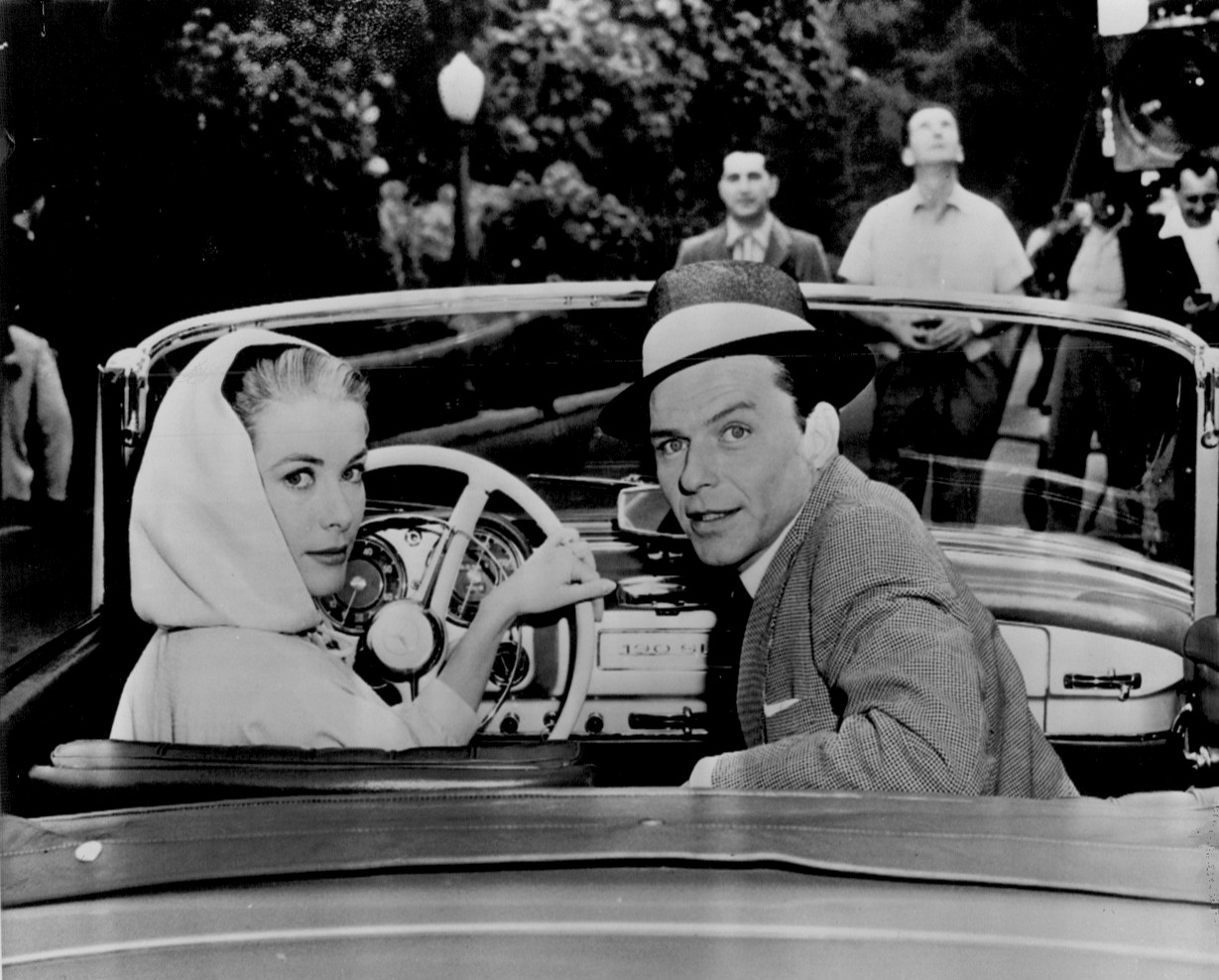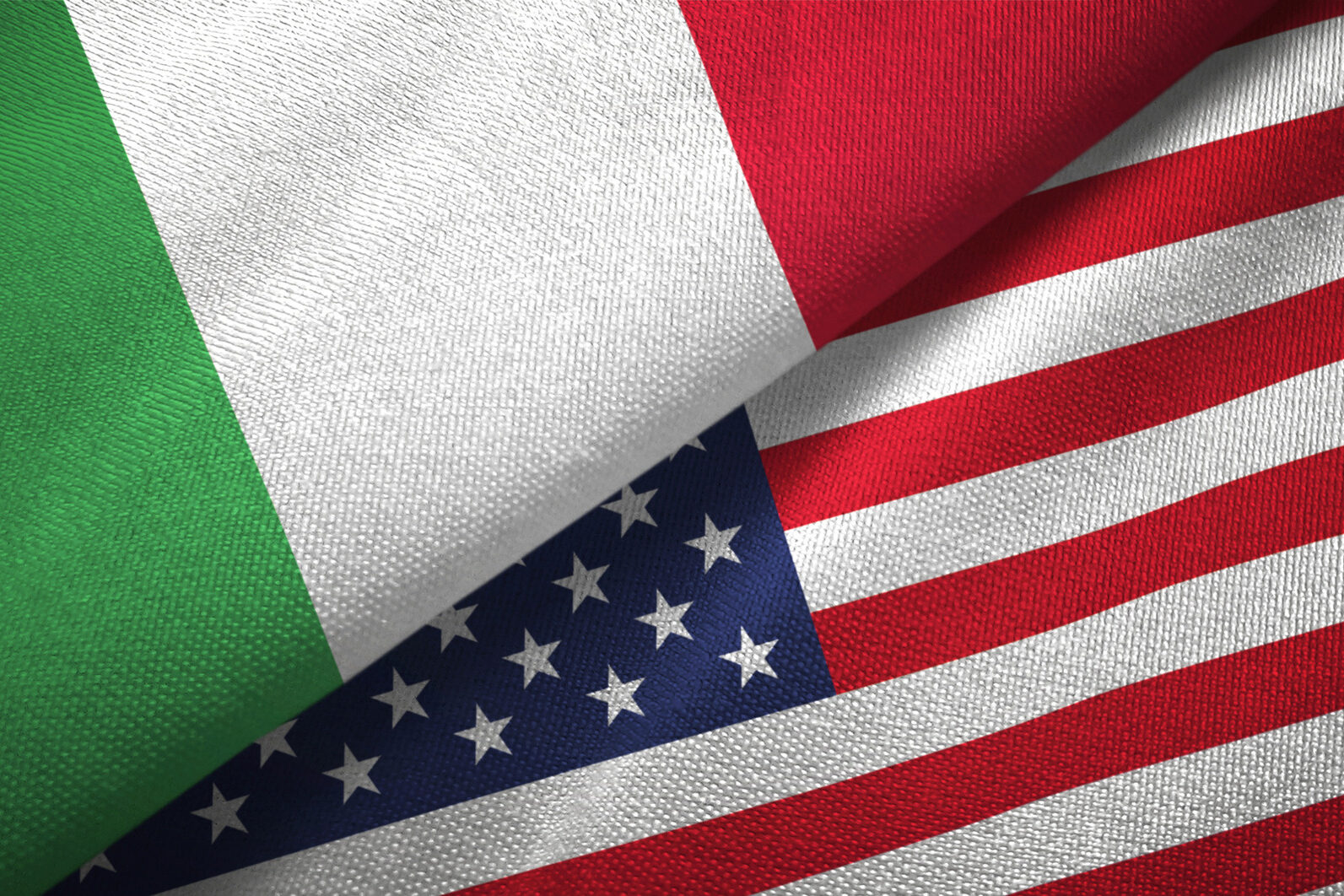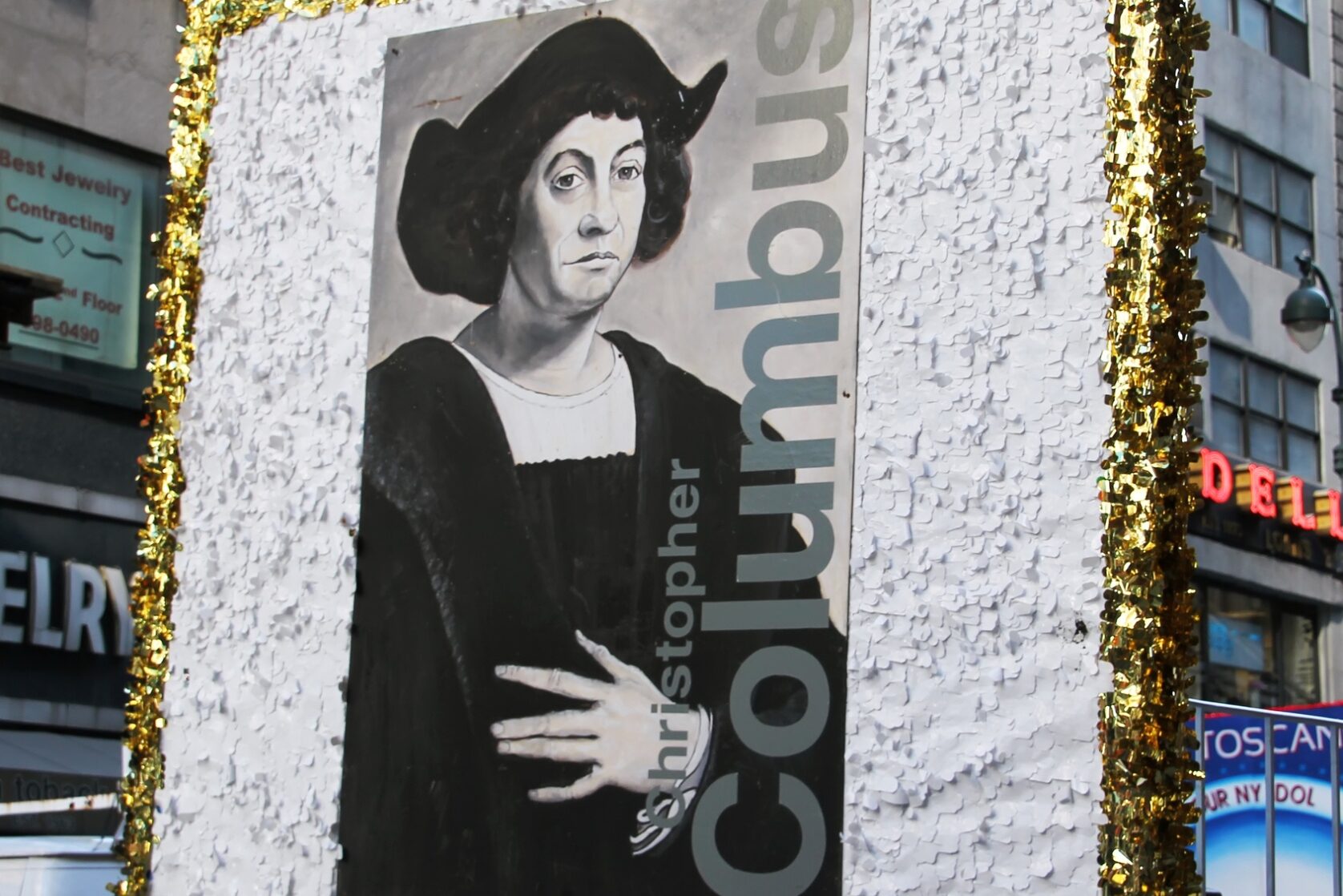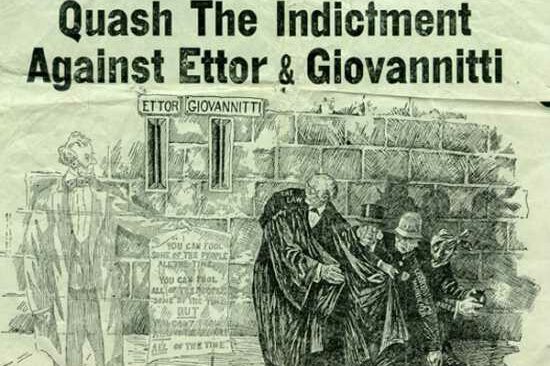Dear readers,
Frank Sinatra left us on May 14, 1998, at Cedars Sinai Medical Center in Los Angeles. His wife, Barbara, and children Nancy, Frank Jr., and Tina were at his bedside when he passed away, at what his fans worldwide thought was the “young age” of 82. Frank’s fans believed the famous words of their favorite Italian-American icon, “May you live a hundred years and may the last voice you hear be mine,” and somehow expected him to be around for at least a cent’anni. On Frank’s simple gravestone, we can read: Francis Albert Sinatra, 1915-1998, the best, it’s yet to come. Let’s hope so.
**
Here are some excerpts from my May 1998 column.
Frank Sinatra felt like family to many fans in the early days of his career, and like any family member, especially one that has been part of our lives for over 50 years, Frank’s fans still miss him. Mauro Potestio, an Italian-American reader who lives in Portland, Oregon, has a party room dedicated to Frank that is filled with Sinatra memorabilia he has collected since his high school days. Mauro, a retired teacher, owns each and every commercial record Sinatra made in the 78′, 33′, 1/3′ and CDs and still listens to them. He never drives a mile without having Sinatra on the speaker system.
In Mauro Potestio’s party room, dedicated to Sinatra, there are over 60 framed pictures. Mauro also hosts a dinner party each year in December, Frank Sinatra’s birthday month.
**
Villa Scalabrini Retirement Center in Sun Valley, California, benefited from several Sinatra concerts in the late 1970s. The up-to-date commercial kitchen at the villa was dedicated to Frank’s mother, Dolly Sinatra. In 1979, Frank, who had already donated $250,000 for the state-of-the-art commercial kitchen at the villa, following a tribute to Dolly concert in Las Vegas, added another $50,000 where proceeds from a concert at the LA Amphitheater.
**
Sinatra’s stays in the San Francisco Bay Area were memorable for his fans. In 1946, at the height of his singing career, students skipped school to hear him sing at the Golden Gate Theater. They stayed for show after show until Sinatra begged them to go home so others could get into the theater.
He was in San Francisco a lot in 1957 to film the musical Pal Joy. Sinatra could be found at Coit Tower on Telegraph Hill, which the filmmakers had transformed into the mansion of Joey’s wealthy mistress, played by Rita Hayworth.
In 1981, Sinatra was in San Francisco for a benefit concert for the Mental Health and Child Abuse Foundation at the Masonic Auditorium. He paid the Nelson Riddle Orchestra to accompany him, but he told the organizers of the benefit that, if the information got out that he was donating everything himself, he couldn’t give a nickel.
**
Frank Sinatra didn’t move pianos was the title of an article my bambina Caterina wrote. I thought the message it imparts was worth sharing. If you are feeling mired in the minutiae of your life, try to get unstuck and get out from under. Doing so will allow you to start singing and gliding into more real living. Leave the pianos to the moving experts. Start by making space in your life for true living and eliminating what you are not passionate about. Get clear about your priorities. We only have so much time in a day and our mental and physical energy is limited. Perhaps this is what allowed the chairman of the board to become a legend and make time to enjoy living every day.
**
After switching political parties, Sinatra was back in San Francisco to help President Reagan win re-election. “He sang better when he was a Democrat,” wrote a local columnist. Sinatra and his cronies, Dean Martin and Sammy Davis Jr., kicked off the reunion tour at the Oakland Coliseum Arena in 1988, with Sinatra stealing the show. At the Circle Star in 1989, Sinatra marked the debut of his own brand of pasta sauce by holding up a jar of tomato basil sauce marketed by Artanis (that’s Sinatra spelled backward).
Once, he was asked what songs he would sing if he had only one concert left, to which he answered: “I’d do My Way. I’d have to do I’ve Got You Under My Skin. I’d do One For My Baby, which is sort of tied to me… I’d have to do what they want. After all, that’s why they’re here.”
Cari lettori,
Frank Sinatra ci ha lasciato il 14 maggio 1998, al Cedars Sinai Medical Center di Los Angeles. Sua moglie Barbara e i figli Nancy, Frank Jr. e Tina erano al suo capezzale quando morì, in quella che i suoi fan in tutto il mondo pensavano fosse la “giovane età” di 82 anni. I fan di Frank credevano alle famose parole della loro icona italoamericana preferita: “Che tu possa vivere cent’anni e che l’ultima voce che sentirai sia la mia”, e in qualche modo ci si aspettava che fosse in giro per almeno cent’anni. Sulla semplice lapide di Frank si legge: Francis Albert Sinatra, 1915-1998, il meglio, deve ancora venire. Speriamo.
**
Ecco alcuni estratti dal mio articolo del maggio 1998.
Frank Sinatra era percepito come uno di famiglia da molti fan all’inizio della sua carriera e, come ogni membro della famiglia, specialmente uno che fa parte della nostra vita da oltre 50 anni, ai fan di Frank manca ancora. Mauro Potestio, un lettore italo-americano che vive a Portland, Oregon, ha una sala per le feste dedicata a Frank piena di cimeli di Sinatra che ha raccolto dai tempi del liceo. Mauro, insegnante in pensione, possiede tutti i dischi commerciali che Sinatra ha realizzato nei 78′, 33′, 1/3′ giri e i cd e li ascolta ancora. Non guida mai per un miglio senza avere Sinatra negli altoparlanti.
Nel salone delle feste di Mauro Potestio, dedicato a Sinatra, ci sono oltre 60 quadri incorniciati. Mauro organizza anche una cena ogni anno a dicembre, mese del compleanno di Frank Sinatra.
**
Villa Scalabrini Retirement Center a Sun Valley, in California, ha beneficiato di numerosi concerti di Sinatra alla fine degli anni ’70. La moderna cucina commerciale della villa era dedicata alla madre di Frank, Dolly Sinatra. Nel 1979, Frank, che aveva già donato 250.000 dollari per la cucina all’avanguardia della villa, dopo un tributo al concerto di Dolly a Las Vegas, aggiunse altri 50.000 dollari come provento di un concerto all’Anfiteatro di Los Angeles.
**
I soggiorni di Sinatra nella zona della Baia di San Francisco furono memorabili per i suoi fan. Nel 1946, al culmine della sua carriera di cantante, gli studenti saltarono la scuola per sentirlo cantare al Golden Gate Theatre. Rimasero spettacolo dopo spettacolo finché Sinatra non li pregò di tornare a casa in modo che altri potessero entrare nel teatro.
Rimase molto a San Francisco nel 1957 per girare il musical Pal Joy. Sinatra si poteva trovare alla Coit Tower su Telegraph Hill, che i filmmaker avevano trasformato nella villa della ricca amante di Joey, interpretata da Rita Hayworth.
**
Nel 1981, Sinatra era a San Francisco per un concerto di beneficenza per la Mental Health and Child Abuse Foundation al Masonic Auditorium. Pagò la Nelson Riddle Orchestra perché lo accompagnasse, ma disse agli organizzatori della serata di beneficenza che, se si fosse sparsa la voce che avrebbe donato tutto da solo, non avrebbe potuto dare un soldo.
**
Frank Sinatra non spostava i pianoforti era il titolo di un articolo scritto dalla mia bambina Caterina. Ho pensato che valesse la pena condividere il messaggio che trasmetteva. Se ti senti impantanato nelle minuzie della tua vita, prova a sbloccarti e ad uscire da un altro lato. Ciò ti permetterà di iniziare a cantare e scivolare in una vita più reale. Lascia i pianoforti agli esperti di traslochi. Inizia facendo spazio nella tua vita per una vita vera eliminando ciò che non ti appassiona. Chiarisci le tue priorità. Abbiamo solo un certo tempo ogni giorno e la nostra energia mentale e fisica è limitata. Forse è proprio questo che ha permesso al capo di diventare una leggenda e di trovare il tempo per godersi la vita quotidiana.
**
Dopo aver cambiato partito politico, Sinatra tornò a San Francisco per aiutare il presidente Reagan a vincere la rielezione. “Cantava meglio quando era democratico”, scrisse un editorialista locale. Sinatra e i suoi amici, Dean Martin e Sammy Davis Jr., diedero il via al tour di reunion all’Oakland Coliseum Arena nel 1988, con Sinatra che rubò la scena. Al Circle Star nel 1989, Sinatra fece debuttare la sua marca di sugo per pasta sollevando un barattolo di salsa di pomodoro e basilico commercializzata da Artanis (Sinatra scritto al contrario).
Una volta gli fu chiesto quali canzoni avrebbe cantato se gli fosse rimasto un solo concerto, al che rispose: “Farei a modo mio. Dovrei fare I’ve Got You Under My Skin. Farei One For My Baby, che è in un certo senso legato a me… e dovrei fare quello che vuole il pubblico, dopotutto è per questo che sono qui”.































